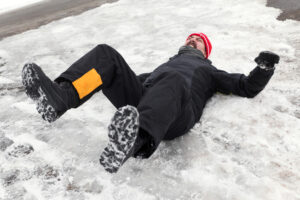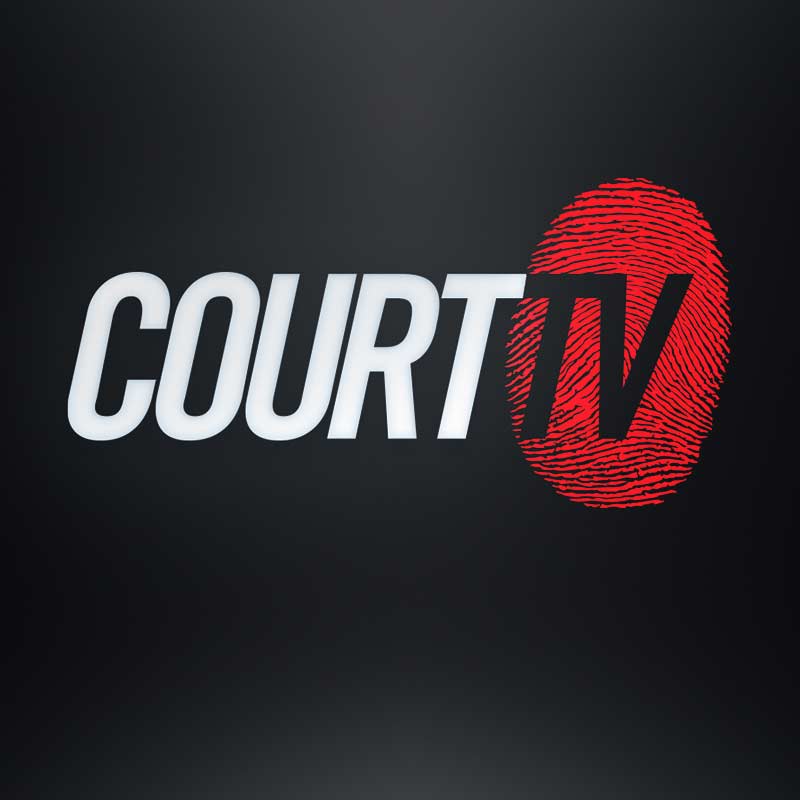With colder weather comes picturesque snowscapes, fun winter sports, and, sadly, a significantly increased risk of slip and fall accidents due to icy conditions.
Despite the commonality of such accidents, many people don’t understand the legal implications. Who is responsible when someone slips and falls on a patch of ice or snow?
The answers hinge on multiple factors, including state laws, property ownership, and individual behavior.
A Centennial slip and fall lawyer can explain how slip and fall cases occur, the various legal responsibilities and implications, the injuries that can result from slip and fall accidents, and the potential outcomes of a personal injury lawsuit. Your slip and fall lawyer will prepare you to handle such an incident if it occurs.
Understanding Slip and Fall Accidents
Slip and fall accidents occur when an individual slips, trips, or falls on someone else’s property due to unsafe conditions, such as snow and ice, but the legal and practical nuances of these incidents go far beyond this simple explanation.

Slip and fall accidents cover a wide array of mishaps, including tripping over a cluttered walkway or slipping on an icy pavement. In winter, they often occur because of unsafe walking conditions due to snow and ice. The liability in these cases often rests on the property owner or occupier.
Common Causes of Slip and Fall Accidents
Winter contributes to the prevalence of slip and fall accidents because of the icy and snowy conditions. Poorly lit areas, untreated icy surfaces, and uncleared snow are some leading causes. Inadequate maintenance of parking lots, sidewalks, aisles, or stairways can also increase the risk of such accidents.
Winter is a busy time for emergency room doctors, with experts estimating that winter weather kills more than twice as many Americans as summer heat. Tripping and falling on ice or snow can lead to serious injury.
The injuries from such accidents can include minor bruises and sprains or more severe conditions such as fractures, concussions, or even spinal cord damage. Besides physical injury, victims can also experience significant mental distress because of the accident, such as post-traumatic stress disorder.
Laws and Regulations Regarding Snow and Ice Removal
Preventing slip and fall accidents doesn’t solely rest on individual vigilance during adverse weather. States, regions, and municipalities have laws and regulations regarding snow and ice removal.
These rules outline property owners’ winter responsibilities and the consequences of not meeting them. Understanding these laws and regulations is crucial, as adherence or lack thereof often plays a significant role in determining liability in the event of a slip and fall accident.
General Laws and Responsibilities of Property Owners for Snow and Ice Removal
Property owners have a legal obligation to ensure the safety of their premises. In winter, this duty extends to the timely and adequate removal of snow and ice from their property, particularly from walkways, driveways, stairs, and parking lots. They are also responsible for the maintenance of their premises to prevent the formation of ice.
Failure to perform these responsibilities may create hazardous conditions, putting individuals at risk of a slip and fall accident. In such situations, property owners may bear legal liability if someone sustains an injury on their property because of their neglect.
The specifics of snow and ice clearing regulations vary widely from place to place. Some regions require property owners to clear snow and ice within a certain number of hours after a snowfall, while others are more lenient. In some cities, for instance, property owners must remove snow from sidewalks within 24 hours of snowfall; others have up to 48 hours to do so.
Consequences of Not Adhering to These Laws and Regulations
Neglecting the laws and regulations regarding snow and ice removal can lead to serious consequences for property owners. They could face hefty fines or even legal action if someone sustained an injury on their property due to a slip and fall resulting from their neglect. Such negligence could lead to increased insurance premiums.
Knowing and complying with these laws and regulations keeps people safe and protects property owners from potential legal liabilities and financial burdens.
Determining Liability in Slip and Fall Accidents on Ice and Snow
When someone slips and falls on ice or snow, responsibility doesn’t automatically fall on the property owner. Liability in these accidents varies on a case-by-case basis.
Negligence is a legal concept central to determining fault or liability in a slip and fall accident. Negligence arises when a person, such as a property owner, fails to take reasonable care to prevent harm to others. In slip and fall cases, you can hold a property owner negligent if they knew about a snow or ice condition and did not take appropriate action.
Factors in Determining Liability
Courts consider several vital factors when assessing liability in a slip and fall case. These factors may include whether the property owner knew about the icy or snowy conditions and had a chance to fix them or whether the injured person was careful.
Whether the property owner created the dangerous condition can also play a role in determining liability. Other factors may include how long the dangerous condition existed and whether a reasonable person would notice the condition.
Role of the Reasonable Person Standard in Determining Liability
The reasonable person standard establishes whether a party acted negligently. It asks what a reasonable person would have done in a similar situation.
In snowy and icy conditions, a reasonable person would likely take measures to prevent slip and fall accidents, such as salting icy walkways or shoveling snow. If a property owner fails to take such actions, they are not meeting the reasonable person standard and could be liable for injuries resulting from a slip and fall accident.
This standard doesn’t require property owners to guarantee absolute safety, but it requires them to take reasonable steps to prevent foreseeable accidents.
Property Owner’s Liability
When accidents occur due to snow and ice, questions regarding the property owner’s responsibility and liability come to the fore. In most cases, the liability falls under the premises liability law, which obliges the property owner to take adequate measures to ensure safety. Some instances and circumstances could either absolve or solidify the property owner’s liability.
Premises Liability Law Explained
Premises liability is a legal concept that holds property owners and renters liable for accidents and injuries that occur on their property due to improper maintenance or inadequate safety measures. It implies that property owners have a duty of care toward the people who enter their premises. You can hold them responsible for injuries sustained on their property if they fail to uphold this duty.
How this law applies to slip and fall cases on ice and snow largely depends on the specific facts of each case. An accident doesn’t automatically make the property owner liable. To establish liability, you must prove the property owner was negligent in maintaining the property or warning about a dangerous condition.
Circumstances Under Which a Property Owner Is Liable
There are specific circumstances under which a property owner or occupier is liable in a slip and fall case.
These include:
- The property owner or an employee caused the icy or slippery condition to be underfoot.
- The property owner or an employee knew of the dangerous surface but did nothing about it.
- The property owner or an employee should have known about the dangerous surface because a reasonable person taking care of the property would have discovered, removed, or repaired it.
The key determinant in these cases is what the property owner knew and when they should have known. Courts will determine if the property owner took reasonable steps to keep the property safe and whether the injured party was negligent in not seeing or avoiding the condition that led to the fall.
Defenses a Property Owner Can Use in Slip and Fall Cases
While property owners are generally responsible for maintaining safe conditions, there are defenses they can employ in a slip and fall case. These defenses often tend to shift some responsibility onto the injured person.
The property owner might argue that the injured person:
- Was at a location where they should not have been.
- Was engaged in an activity that made the slip and fall more likely to occur.
- Was not paying adequate attention to their surroundings or was acting in a way that contributed to the accident.
- Was warned about the hazardous conditions before the accident.
These defenses might reduce or eliminate the property owner’s liability in a slip and fall case. The effectiveness of these defenses depends on the case’s specifics and may vary by jurisdiction.
How a Victim’s Actions or Inactions Can Influence the Outcome of the Case
The victim’s actions or inactions can significantly influence the determination of liability and the degree of compensation in a slip and fall case. If the plaintiff acted carelessly or failed to observe a visibly dangerous condition that a reasonable person would have avoided, they may be partially or entirely at fault.
The presence of warning signs, the victim’s reason for being in the hazardous area, their footwear, or whether something distracted them can all play into this determination. The more evidence that shows the plaintiff’s negligence, the less responsibility the defendant will bear.
How to Prove Liability in a Slip and Fall Case
Proving liability involves demonstrating that the property owner’s negligence caused your accident and injuries.
Evidence plays a significant role in a slip and fall case, as it establishes liability. In the days after a slip and fall accident, gather as much evidence as possible. This can include taking photographs or videos of the scene showing the conditions that led to the accident, such as uncleared snow or untreated ice.
Get witnesses’ contact information. They could provide valuable statements about what they saw. Document any communication you had with the property owner or manager regarding the incident.
Preserve any evidence related to your injuries. This includes medical records, receipts for any medical treatment you received, and proof of any other costs you incurred due to the accident, such as lost earnings.
Role of Witnesses in Proving Liability
Witnesses can provide an unbiased account of the incident, which can bolster your slip and fall case. A witness can corroborate your version of events and confirm the dangerous conditions that led to your accident. They might have noticed details you missed and can provide an objective perspective supporting your claim of negligence by the property owner.
Importance of Medical Records in Slip and Fall Cases
Medical records are crucial in establishing the extent of your injuries and linking them to the slip and fall accident. These records should detail the nature and severity of your injuries, the treatment you required, any potential long-term effects, and the costs associated with your treatment.
Besides helping prove liability, detailed medical records can also determine the amount of compensation you deserve. In many cases, a higher degree of injury results in higher compensation.
Role of Legal Professionals in Slip and Fall Cases
Dealing with a slip and fall accident requires overwhelming and complex legal proceedings to establish liability. In such cases, legal professionals can play a pivotal role. Attorneys can offer valuable guidance, gather evidence, and represent your interests in negotiations with insurance companies or courts.
How a Lawyer Can Assist in Negotiating With Insurance Companies
Insurance companies often try to minimize their payout, and dealing with them can be challenging, especially when recovering from a traumatic incident. Lawyers can handle these negotiations, ensuring your claim is correctly structured and effectively presented.
Your attorney can counter any attempts from the insurance company to underestimate the severity of your injuries or devalue your claim. Skilled attorneys can interpret the technical language of insurance policies, identify potential coverage you may not be aware of, and fight to secure the highest compensation possible for your injuries.
Legal representation significantly improves your chances of receiving fair compensation, allowing you to focus on your recovery without worrying about the complex legal processes involved in a slip and fall case.
Get the Legal Representation You Deserve
Handling the intricacies of a slip and fall case on your own can be challenging and stressful. A compassionate personal injury lawyer can make all the difference in determining a successful outcome. If you’re dealing with a slip and fall accident or want some guidance on dealing with one, contact a lawyer today.




















